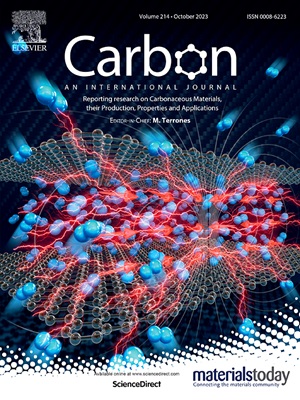Atomic-to-nanoscale thickness-driven tunable carbon and interface-chemistry immensely control tribo-interface and metal-oxidation
IF 10.5
2区 材料科学
Q1 CHEMISTRY, PHYSICAL
引用次数: 0
Abstract
Bodies in sliding contact experience resistance to motion due to frictional forces, causing huge energy wastage and wear that limit the operational lifetime of the systems. Metal-oxidation is another challenging concern which limit the functionality of the systems. Many approaches have been adopted to minimize frictional forces, wear and metal-oxidation with the use of surface coatings being an effective approach. However, achieving low friction and high wear- and oxidation-resistance with sub-10 nm thick coatings, especially at sub-3 nm thicknesses, remains challenging. Here, we employ ultrathin monolithic carbon overcoats with carbon thicknesses ranging from 0.7 to 10 nm to demonstrate significant reduction in the friction, wear and metal-oxidation. Additionally, we investigate the efficacy of bilayer overcoats where an atomically thin (∼0.4 nm) silicon nitride (SiNx) interlayer is introduced between the substrate and carbon overlayer. We discover that while an ultralow carbon thickness of 0.7 nm could substantially reduce friction and wear, a threshold thickness of carbon-containing higher sp3 carbon bonding is required to maintain high wear resistance and low friction for longer durations, and high metal oxidation protection. The functional properties are well-explained based on carbon microstructure, surface-chemistry, interfacial-bonding, and other fundamental reasons.

求助全文
约1分钟内获得全文
求助全文
来源期刊

Carbon
工程技术-材料科学:综合
CiteScore
20.80
自引率
7.30%
发文量
0
审稿时长
23 days
期刊介绍:
The journal Carbon is an international multidisciplinary forum for communicating scientific advances in the field of carbon materials. It reports new findings related to the formation, structure, properties, behaviors, and technological applications of carbons. Carbons are a broad class of ordered or disordered solid phases composed primarily of elemental carbon, including but not limited to carbon black, carbon fibers and filaments, carbon nanotubes, diamond and diamond-like carbon, fullerenes, glassy carbon, graphite, graphene, graphene-oxide, porous carbons, pyrolytic carbon, and other sp2 and non-sp2 hybridized carbon systems. Carbon is the companion title to the open access journal Carbon Trends. Relevant application areas for carbon materials include biology and medicine, catalysis, electronic, optoelectronic, spintronic, high-frequency, and photonic devices, energy storage and conversion systems, environmental applications and water treatment, smart materials and systems, and structural and thermal applications.
 求助内容:
求助内容: 应助结果提醒方式:
应助结果提醒方式:


